Sugarcane is the most important crop that supplies most of the sugar used worldwide. In different uses for Sugarcane production, however, nutrients contribute more to the increase in production. Sugarcane consumes many nutrients during vegetation. Fertilizer management in Sugarcane is one of the most important aspects to increase production. Let’s check out the best fertilizer for Sugarcane.
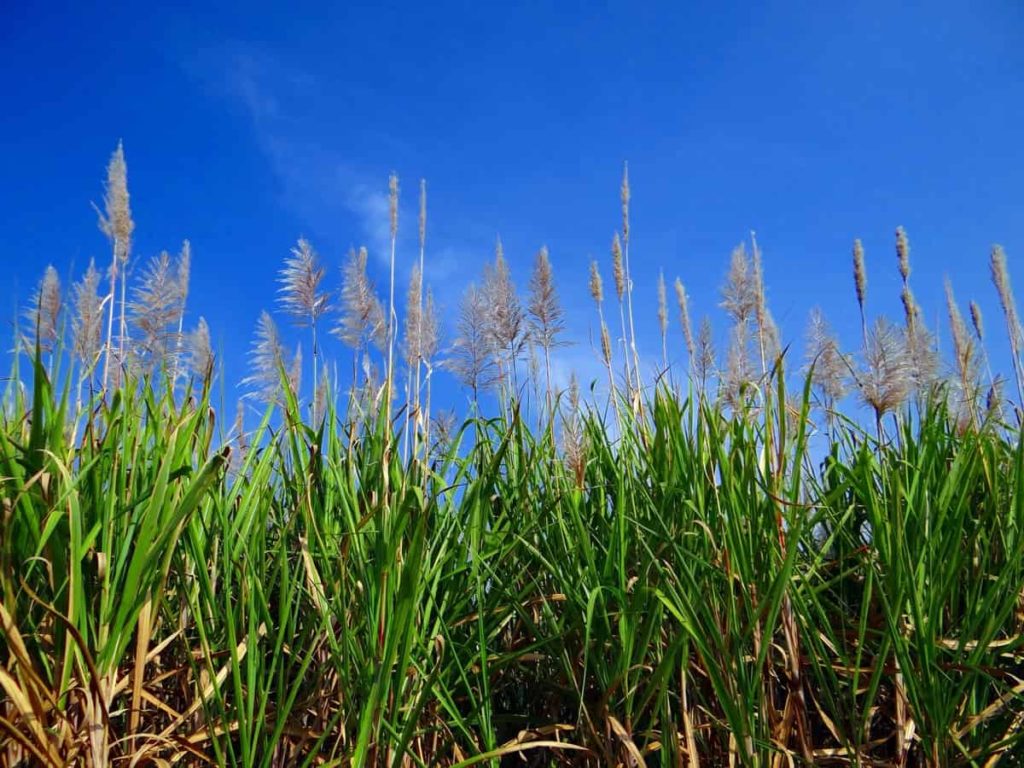
There is no doubt that the Sugarcane crop needs more nutrients. In the early stages of Sugarcane planting, the most active nutrient levels are observed during tillering (from the 3rd to the 6th month after planting). Sugarcane nutritional requirements can be assessed by soil analysis, plant tissue analysis, and/or deficiency symptoms.
Due to its high yield, Sugarcane extracts large amounts of nutrients from the soil and stores them in plants. Thus, agricultural practices should be adopted to ensure an adequate supply of nutrients to the crop to maximize crop yields in the Sugarcane plant cycle and to reduce the subsequent cycles.
Necessary fertilizers for Sugarcane growth
Nitrogen and potassium are the most important nutrients needed for the Sugarcane crop, as they determine most of the yield and primarily affect the concentration of saccharides. Relatively low N-efficiency is well known as a challenge for farmers, so it is generally recommended that the nitrogen supply be extended to multiple applications so that this factor fluctuates and/or avoids loss by leaching. Granular fertilizers and soluble salts are the most widely used fertilization systems in fertilization.
Nitrogen
- Affects Sugarcane production and quality.
- Necessary for plant growth (tiling, foliage formation, stalk formation, and growth) and root development.
- In Sugarcane, vegetative growth is directly related to production.
In case you miss this: Organic Sugarcane Farming, Production Practices
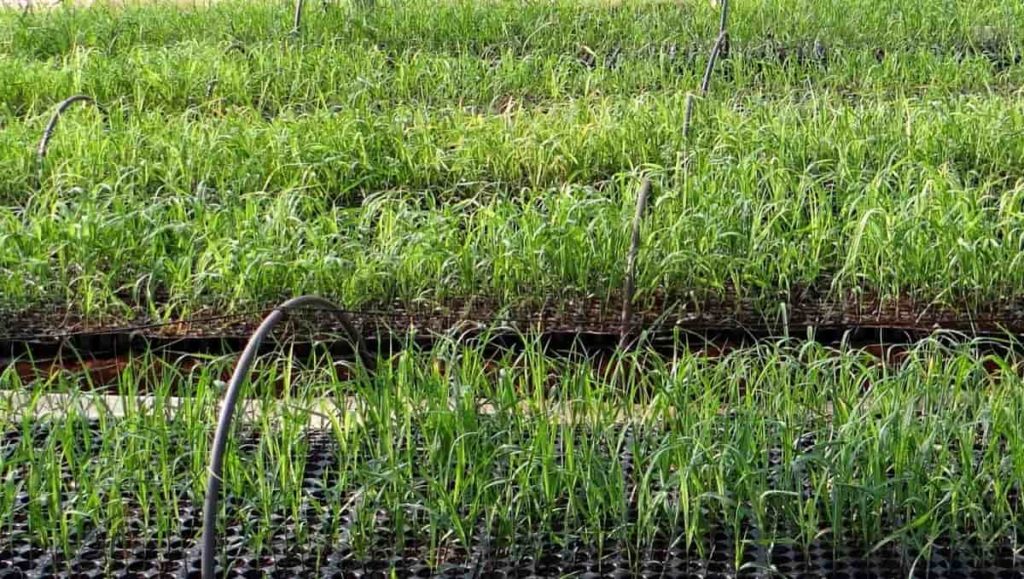
Phosphorus
- Uptake depends on the presence of soluble and absorbent forms in plants.
- The need for P is relatively lower than N and K.
- Needed to increase protein production and thus yield also increase.
- Cell division is important for crop growth.
- Stimulates root development.
- Essential for plant metabolism and photosynthesis.
- Necessary for adequate tillering
Potassium
- Potassium (K) is needed more than N and P.
- Essential for carbon synthesis, the photosynthesis translocation of carbohydrates.
- Involved in various enzymatic activities.
- Necessary for sugar synthesis and translocation to the storage organs.
- Maintains cell tragedy under conditions of moisture stress.
Best fertilizer for Sugarcane
Organic fertilizers
Farmyard Manure (FYM)
Apply Farmyard Manure 12.5 tons per hectare before final plowing in Sugarcane. An average well- decomposed FYM contains 0.5% N, 0.2% P2O5 and 0.5% K2O. When urine and cow dung are mixed, balanced nutrition is available for Sugarcane growth.
Green manure
On the third or fourth day after planting Sugarcane, sow green manure crops like Daincha or Sunhemp on one side of the ridges and raise it as an intercrop with Sugarcane. About 45 days after transplanting, harvest the crop. Green manure adds about 7.5 to 25 tons of green matter per hectare of which about 10-30 kg Nitrogen per hectare. Daincha contains about 0.62% nitrogen and sunn hemp 0.75% N, 0.12% P2O5 and 0.51% K2O.
In case you miss this: Sugarcane Seed Germination, Time, Temperature, Process
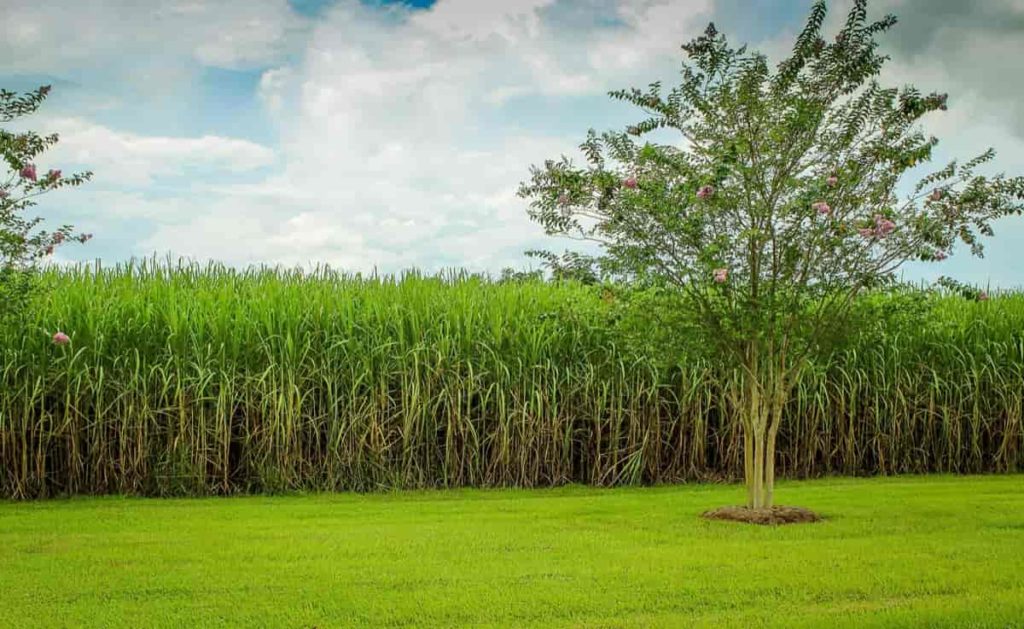
Press mud
It is a by-product of the sugar industry. About 3 tons of press mud cake is left as a by-product for every 100 tons of Sugarcane crushed. Apply 37.5 t / ha press mud before planting. It contains 1.2% N, 2.1-2.4% P2O5 and 2.0% K2O. It has trace amounts of micronutrients and prevents soil erosion, crusting, and cracking, improves drainage, adjusts soil pH, and promotes normal bacterial and soil microbial growth.
Basic use of organic fertilizer
- Apply compost 25 tons per hectare or 37.5 tons per hectare filter press mud or FYM at 12.5 t/ha before final plowing in garden land conditions.
- In wetlands, it can be applied with furrows and incorporated well.
Conditions for basic use of fertilizer
- Apply phosphorous fertilizer based on the soil test values after testing the soil.
- Use 100 kg ferrous sulfate/ha and 37.5 kg zinc sulfate/ha on zinc and iron-deficient soils.
- Apply phosphorus in the furrow bottom and mix lightly with the soil before planting.
Biofertilizer for Sugarcane
The common biofertilizer recommended for N nutrition is Azospirillum and which can colonize Sugarcane roots and fix about 50 to 75 kg of nitrogen per hectare per year of nitrogen in the atmosphere. Gluconacetobacter diazotrophicus is another endophytic nitrogen-fixing bacterium, it is isolated from Sugarcane, has been able to recover more nitrogen than Azospirillum.
In case you miss this: Ring-pit Method of Sugarcane Cultivation
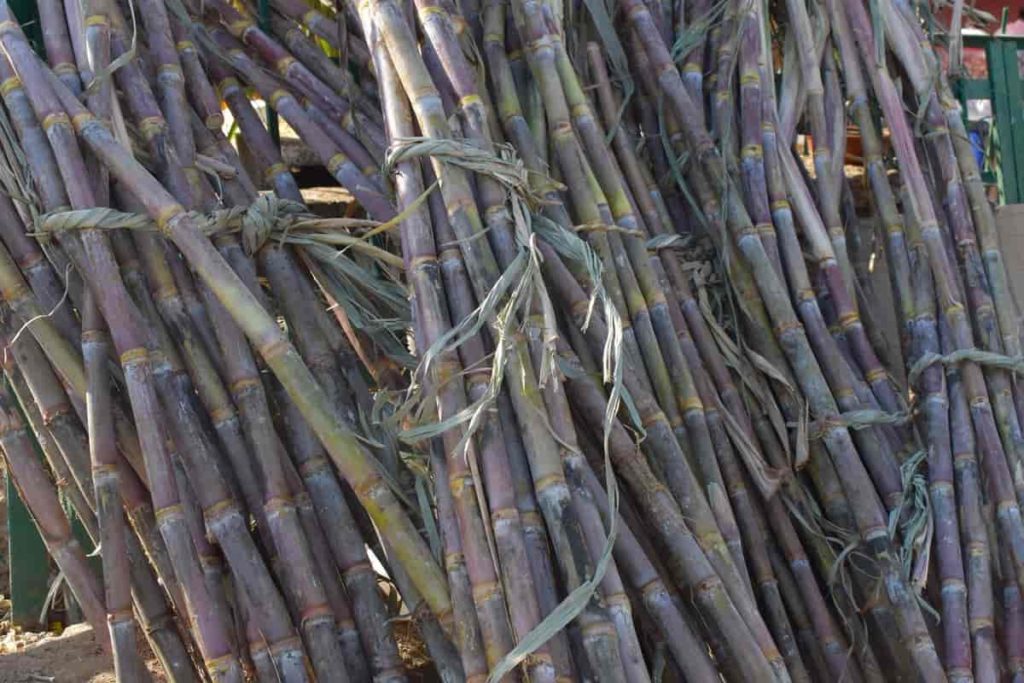
It settles in the whole Sugarcane and increases the total N content. In soil, it can also colonize roots and can dissolve phosphate, iron, and Zn. It can also increase crop growth, Sugarcane production, and sugar content in the juice. Because it is more effective compared to Azospirillum.
Fertilizer application methods
Phosphorus should be applied in bands just below the root zone. This can be done by applying phosphatic fertilizer in the furrow bottom and mixing it with a little bit of soil before applying Sugarcane setts. In Sugarcane, potassium and nitrogen fertilizers are given in split doses, applied in bands.
An important precaution is to cover the fertilizer immediately after application, as fluctuations in hot weather can cause a great deal of nitrogen loss. Partial earthing is done after the first top dressing and full earthing is done after the second top dressing to cover the fertilizer.
How to fertilize Sugarcane
Fertilizing time in Sugarcane at the wrong time can cause burns. The initial light fertilizer is applied when the canes are just coming up. This is followed by a rapid increase in nitrogen content within 30 to 60 days of planting. Then feed the plants every month. The plants must be well watered after feeding to help the nutrients hit the soil and move to the roots. Organic fertilizers are a great way to increase the nitrogen plants need. They need to be applied less frequently, as they take longer to break down. Use as a side dress with crop root edges.
NPK fertilizer schedule
The requirements of NPK depend on variety, type of soil, level of irrigation, etc. Nutrient requirements are met not only by the use of manures and fertilizers but also by the status of fertility. The nutrient intake provided will be determined based on the need of the crop from the soil and organic fertilizers, potential losses of nutrients applied through leaching, fluctuations, fixation, etc.
In case you miss this: Sugarcane Farming Project Report, Cost and Profit

Sugarcane produces large amounts of biomass and it is a giant crop. Therefore, it has very high nutritional requirements. The average 12-month crop produces a total of 45 tons of dry matter per hectare is equal to 100 tons of cane; 10 tons of sugar. An average of 1.0 kg N, 0.6 kg P2 O5 and 2.25 kg K2O is extracted from one ton of Sugarcane. Thus, 100 tons per hectare of crop removes 100,60,225 kg N, P2 O5, and K2O from the soil respectively.
Essential nutrient for improving Sugarcane yield
- For high yields, nitrogen is important. It fuels crop development and growth, leading to stronger crops.
- Particularly, phosphorus is important for root growth, maximizing early yields, early shoot growth and tillering, and increasing the length of internodes.
- Potassium, like nitrogen, also promotes long internode growth, strong Sugarcane growth, extensive Sugarcane growth, and production. Supplies need to be balanced with nitrogen.
- For maintaining good growth for high yields, magnesium, sulfur, and iron increase photosynthetic activity.
- Calcium ensures good plant strength, leaf and stalk production, protects roots, thus maintaining early crop structure and yield.
- Boron and zinc help in the strong root growth and early shoots.
- Sugarcane production is highest on highly irrigated fertile lands, especially during the tillering and growth stages.
Integrated nutrient management
In the INM approach, chemical, organic and biological fertilizers or manures are used in appropriate combinations, complement each other, and often improve input utilization and maximize yields and increase crop quality, soil quality. Create a harmonious effect to maintain without compromising the health or any other environmental aspects.
Source of nutrients
- Organic – FYM, compost, press mud, crop residues, by-products, effluents, etc.
- Biological – Biofertilizer, green manure, legume companion and rotating crops, crop rotation.
INM practices
- In many Sugarcane growing areas, soil productivity has declined due to over-cropping and lack of proper soil fertility management practices. Soil productivity can be restored through rational integrated nutrient management (INM) consisting of organic manures, fertilizers, and biofertilizers.
- Large organic manures such as compost, Farmyard Manure, and press mud must be added to the soil at the rate of 15 to 25 tons per hectare before planting.
- Sunn hemp green manure can be grown as an intercrop and added to the soil 30 to 45 days after planting.
- A fertilizer schedule based on soil tests is recommended. A blanket schedule of 275-65-115 kg N, P, and K can be adopted when this is not possible.
- Phosphatic fertilizers, preferably superphosphates, can be used primarily or during the first hoeing period and within 30 to 45 days of planting.
- Nitrogen and Potassic fertilizers should be applied in four splits. They are first split during 30-45 days, the second split during 60-75 days, the third split during 90-105 days, and the fourth split after 120-135 days
In case you miss this: Sugarcane Farming Guide,Cultivation For Beginners
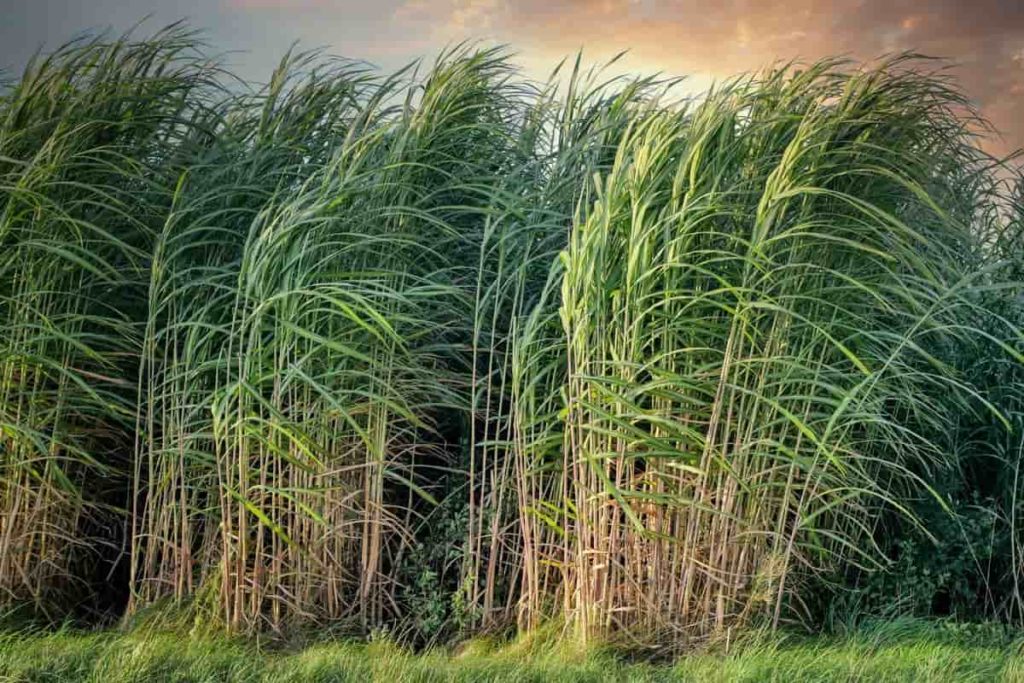
- The efficiency can be enhanced by mixing urea with neem cake powder in the ratio of 4: 1 one day before use. It is recommended to apply a mixture of urea and potash fertilizer in holes of 10 cm depth with 15 cm spacing around the plant rows.
- Fifty kg of micronutrient mixture per hectare consisting of 20 kg of ferrous sulfate, 10 kg of zinc sulfate, 10 kg of manganese sulfate, 5 kg of copper sulfate, and 5 kg of borax can be applied mainly in planting furrows.
- When chlorotic symptoms due to iron or zinc deficiency appear on crop leaves, dissolve 2.5 kg zinc sulfate, 5 kg ferrous sulfate, and 5 kg urea per hectare in 500 liters of water and spray. Plants can be sprayed one or two more times at intervals of 15 days if required.
- Azospirillum and phosphobacteria biofertilizers at the rate of 10 kg per hectare mixed with 10 kg of compost should be applied mainly on planting furrows or at the time of first hoeing and weeding 30 to 45 days after planting. Soil pH for crops should be maintained in the neutral range of 6.5 to 7.5.
- Types of Pesticides Used in Agriculture: A Beginner’s Guide
- Economical Aquaculture: A Guide to Low-Budget Fish Farming
- 15 Common Planting Errors That Can Doom Your Fruit Trees
- How to Make Houseplants Bushy: Effective Tips and Ideas
- Innovative Strategies for Boosting Coconut Pollination and Yield
- Pollination Strategies for Maximum Pumpkin Yield
- The Complete Guide to Chicken Fattening: Strategies for Maximum Growth
- Natural Solutions for Tulip Problems: 100% Effective Remedies for Leaf and Bulb-Related Issues
- Revolutionizing Citrus Preservation: Towards a Healthier, Greener Future
- Natural Solutions for Peony Leaf and Flower Problems: 100% Effective Remedies
- Maximizing Profits with Avocado Contract Farming in India: A Comprehensive Guide
- Natural Solutions for Hydrangea Problems: 100% Effective Remedies for Leaf and Flowers
- The Ultimate Guide to Choosing the Perfect Foliage Friend: Bringing Life Indoors
- From Sunlight to Sustainability: 15 Ways to Use Solar Technology in Agriculture
- The Ultimate Guide to Dong Tao Chicken: Exploring from History to Raising
- The Eco-Friendly Makeover: How to Convert Your Unused Swimming Pool into a Fish Pond
- Mastering the Art of Delaware Chicken Farming: Essentials for Healthy Backyard Flocks
- 20 Best Homemade Fertilizers for Money Plant: DIY Recipes and Application Methods
- How to Craft a Comprehensive Free-Range Chicken Farming Business Plan
- Brighten Your Flock: Raising Easter Egger Chickens for Beauty and Bounty
- How to Optimize Your Poultry Egg Farm Business Plan with These Strategies
- Subsidy for Spirulina Cultivation: How Indian Government Schemes Encouraging Spirulina Farmers
- Ultimate Guide to Raising Dominique Chickens: Breeding, Feeding, Egg-Production, and Care
- Mastering the Art of Raising Jersey Giant Chickens: Care, Feeding, and More
- Ultimate Guide to Raising Legbar Chickens: Breeding, Farming Practices, Diet, Egg-Production
- How to Raise Welsummer Chickens: A Comprehensive Guide for Beginners
- How to Protect Indoor Plants in Winter: A Comprehensive Guide
- Ultimate Guide to Grow Bag Gardening: Tips, Tricks, and Planting Ideas for Urban Gardeners
- Guide to Lotus Cultivation: How to Propagate, Plant, Grow, Care, Cost, and Profit
- Agriculture Drone Subsidy Scheme: Government Kisan Subsidy, License, and How to Apply Online
- Ultimate Guide to Raising Araucana Chickens: Breed Profile, Farming Economics, Diet, and Care
- Bringing Hydroponics to Classroom: Importance, Benefits of Learning for School Students
- Ultimate Guide to Raising Polish Chickens: Breed Profile, Farming Economics, Diet, and Care
- Ultimate Guide to Raising Australorp Chickens: Profile, Farming Economics, Egg Production, Diet, and Care
- Silkie Chicken Farming: Raising Practices, Varieties, Egg Production, Diet, and Care
- Sussex Chicken Farming: Raising Practices, Varieties, Egg Production, Diet and Care